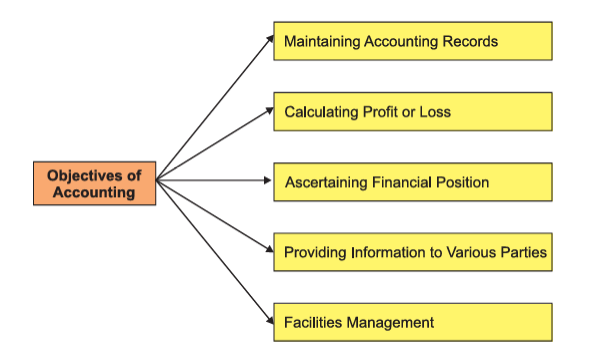Basic Accounting Terms – Class 11 Notes
Chapter 2 of Class 11 Accountancy covers the essential terms used in accounting. These terms form the foundation of financial literacy for commerce students.
1. Entity
An entity is an independent economic unit that carries out business activities. It can be a person, firm, or company.
Example: Tata Motors, Infosys, or a small shop near your home.
2. Business Transaction
A business transaction is any financial activity that affects the financial position of a business and can be measured in money terms.
Example: Buying goods for ₹5,000 or selling services worth ₹2,000.
3. Capital
Capital is the amount invested by the owner into the business. It could be in the form of cash or assets and is considered a liability of the business to the owner.
Example: If Ramesh starts a business and invests ₹1,00,000, that becomes his capital.
4. Drawings
Drawings refer to the amount withdrawn by the owner from the business for personal use.
Example: If the owner buys a bike for himself using business money, it is called a drawing.
5. Liabilities
Liabilities are the obligations that a business needs to repay in the future.
Types of Liabilities
i) Current Liabilities: Payable within one year.
Example: Creditors, Bills Payable.
ii) Non-Current Liabilities: Payable after one year.
Example: Bank Loans, Debentures.
6. Assets
Assets are valuable resources owned by a business to generate income.
Types of Assets
i) Current Assets: Realized within a year.
Example: Cash, Debtors, Stock.
ii) Non-Current Assets: Held for long-term business use.
Example: Land, Machinery.
Subtypes:
a) Tangible Assets: Physical existence (e.g., Building).
b) Intangible Assets: No physical existence (e.g., Goodwill, Patent).
7. Expenses
Expenses are the costs incurred to earn revenue.
Example: Salaries, Rent, Wages.
8. Expenditure
Expenditure is the amount spent on acquiring goods or services.
i) Revenue Expenditure: Benefit lasts less than a year.
Example: Utility bills, Interest.
ii) Capital Expenditure: Benefit lasts more than a year.
Example: Buying machinery.
9. Revenue
Revenue is the total income earned through business activities.
Example: Sales, Commission earned, Rent received.
10. Income
Income = Revenue – Expenses. It is the net increase in business wealth.
11. Profit
Profit is when revenue exceeds expenses in a financial year.
Formula: Profit = Revenue – Expenses
12. Gain
Gain is a non-recurring profit from events not part of core business.
Example: Selling an old computer for ₹8,000 when its book value is ₹5,000.
13. Loss
Loss is when expenses exceed revenues.
Formula: Loss = Expenses – Revenue
14. Goods
Goods are items purchased for resale, not for personal use.
Example: A stationery shop purchases pens and sells them to customers.
15. Purchases
Purchases are goods bought for resale (trading) or for production (manufacturing).
16. Purchase Return
Purchase Return refers to returning previously bought goods to the supplier.
17. Sales
Sales are the revenue from goods/services provided to customers.
18. Sales Return
Sales Return is when customers return goods to the business due to defects or mismatch.
19. Stock
Stock is the unsold goods lying with the business on a particular date.
20. Debtors
Debtors are customers who bought goods on credit and are yet to pay.
21. Creditors
Creditors are those from whom the business has bought goods/services on credit.
22. Voucher
Voucher is a document that proves a business transaction occurred.
Example: Receipt, Invoice, Cash Memo.
23. Discount
Discount is a reduction in price offered by the seller.
i) Trade Discount: Given to boost sales; not recorded in books.
ii) Cash Discount: Given to encourage timely payment; recorded in books.
24. Bad Debts
Bad Debts are unrecoverable amounts from debtors, written off as loss.
25. Operating Cycle
The operating cycle is the time between acquiring an asset and converting it into cash.
Practice Questions – Basic Accounting Terms Class 11
Q1. What is the difference between capital and revenue expenditure?
Q2. Give two examples each of current and non-current assets.
Q3. What is the meaning of drawings? Give a practical example.
Q4. Define the term ‘Voucher’ and explain its types with examples.
Q5. Distinguish between creditors and debtors.
These questions will help you prepare well for Basic Accounting Terms Class 11 Important Questions and CBSE board exams.

